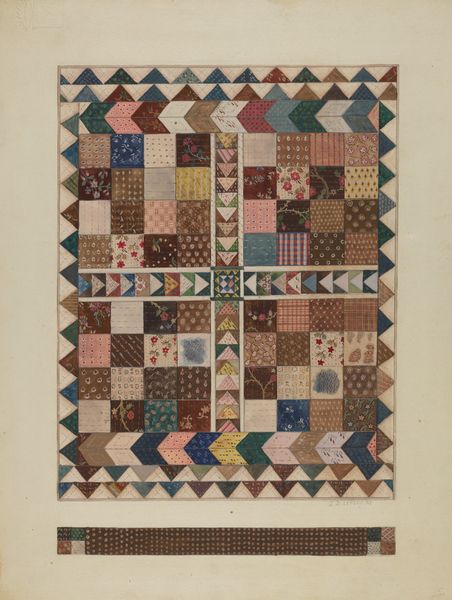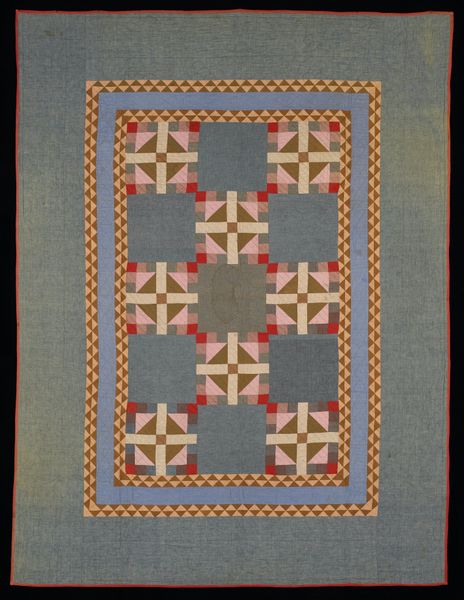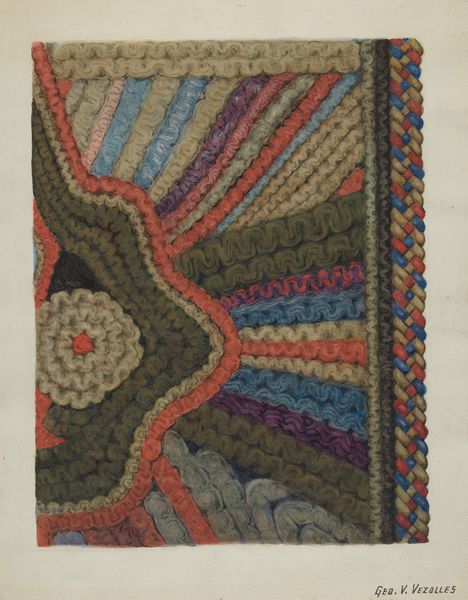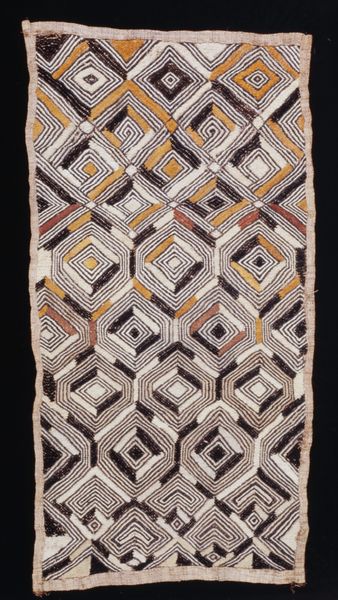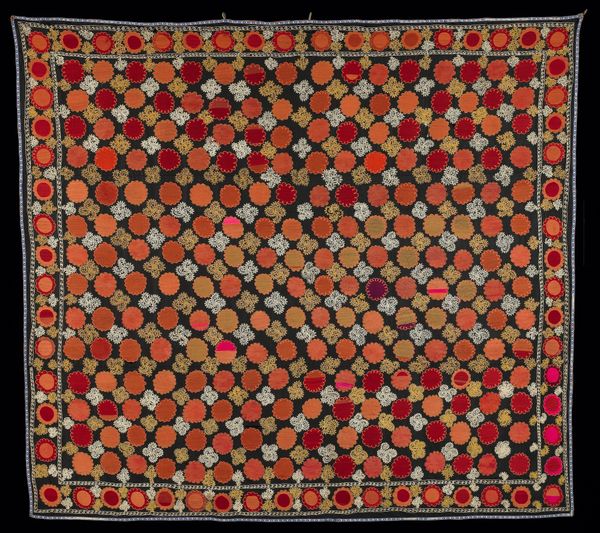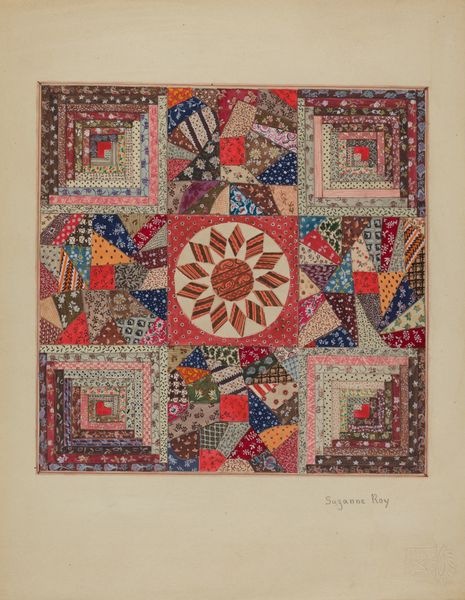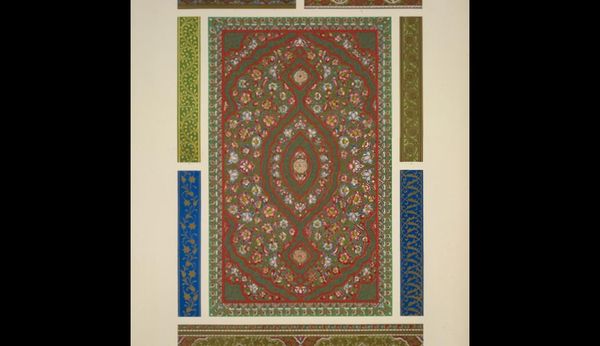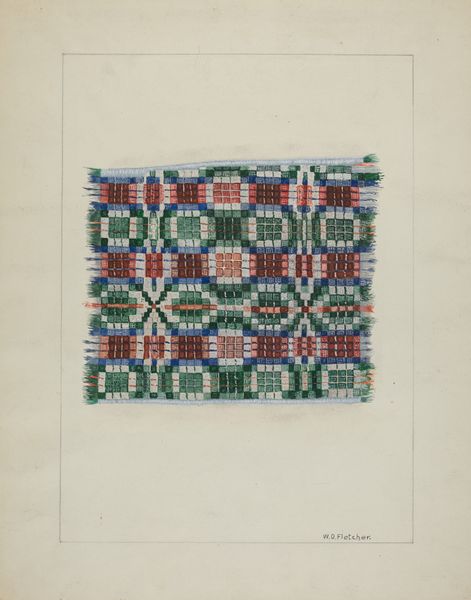
drawing, mixed-media, fibre-art, textile
#
drawing
#
mixed-media
#
fibre-art
#
textile
#
geometric pattern
#
folk-art
#
geometric
#
geometric-abstraction
Dimensions: overall: 35.2 x 23.6 cm (13 7/8 x 9 5/16 in.)
Copyright: National Gallery of Art: CC0 1.0
Curator: This artwork really draws the eye in! What's your immediate response to its presentation? Editor: There's something inherently comforting about the regularity and earth-toned palette of this rug—although I suspect a digital image isn't really conveying the textures involved here. It feels homey. Curator: It's entitled "Hooked Rug", created around 1936 by Ruth M. Barnes, combining fibre-art with a drawing, a mixed-media textile that demonstrates Barnes' exploration of folk-art motifs. This piece seems to synthesize art with functional design. What connections do you draw to that legacy? Editor: Considering the time period, this piece serves as an intriguing cultural artifact of American domesticity. The geometric patterns carry echoes of both traditional craft and the burgeoning abstract art movement. Its existence blurs boundaries: folk tradition encountering modernist aesthetics, artistic expression flourishing in the so-called domestic sphere. How radical to imagine that a functional rug embodies these shifting dynamics! Curator: The symbols speak volumes, indeed. Notice how the repeated triangles within each larger square lend an energetic yet ordered rhythm to the piece. What's the weight, emotionally and psychologically, of repeated motifs when encountering textiles? Editor: Precisely! Repetition taps into primal human needs—pattern recognition, the comfort of rhythm, even hinting at early forms of mathematical thinking. This rug could represent something universal about seeking stability and structure. While Barnes made deliberate formal decisions in terms of composition, there is an element here, in the repetitive patterning of an historical domestic setting, of women's cultural production. The imagery connects to historical and collective emotional understanding. Curator: And it’s through this lens of cultural significance that Barnes transforms everyday materials into vehicles for cultural memory. As the folk-art echoes intertwine with geometry, does it transform your initial reaction? Editor: Absolutely. Beyond the charm, I see a quiet rebellion, an embrace of the local vernacular during an era defined by societal change and increasingly homogenized culture. It makes me appreciate that the political, philosophical, and aesthetic aspects intertwine. Curator: It certainly offers so much food for thought in such a modest form. Editor: Agreed. The conversation has completely shifted how I now appreciate it. There's depth within the design.
Comments
No comments
Be the first to comment and join the conversation on the ultimate creative platform.
